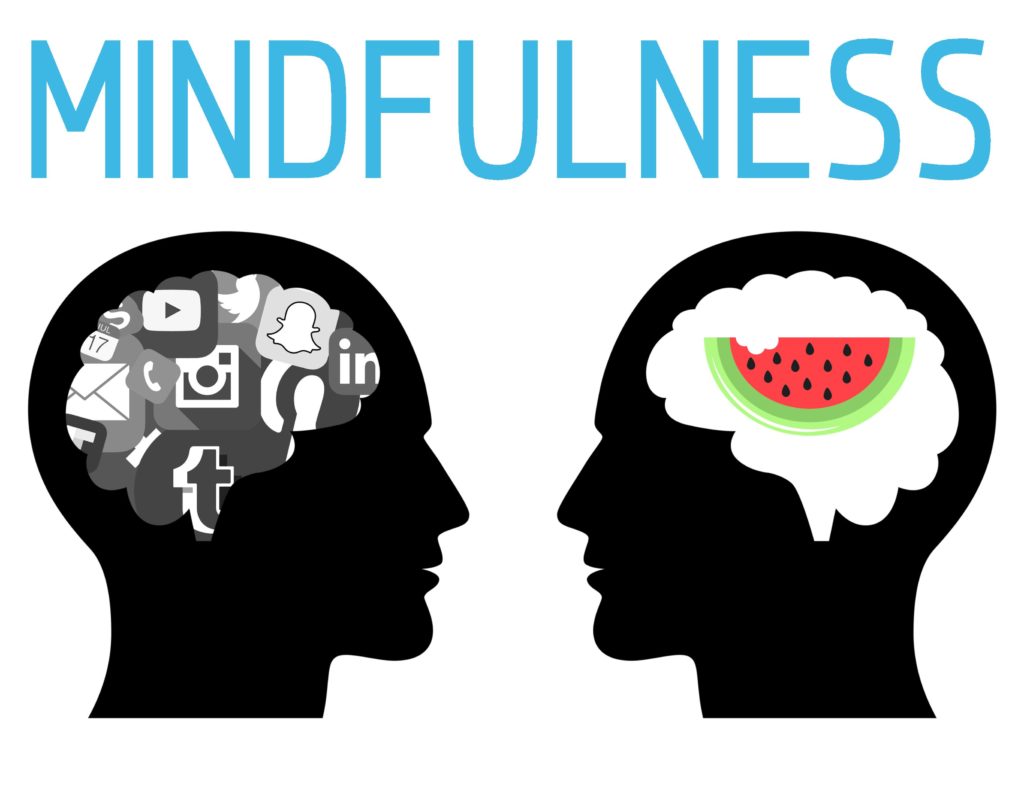If you have been paying much attention to the media lately you have probably heard the term “mindfulness” tossed around. It might be in use when talking about physical health, life satisfaction, mental health, etc. It seems that these days we are applying the principle of mindfulness to everything. But what actually is mindfulness and why are we as a culture rushing to apply it to everything from color selection and appreciation to parenting?
Mindfulness is a mindset brought about by focusing your attention on the current moment, while calmly noticing and accepting your feelings, thoughts, and senses.
In an article written by Rasmus Hougaard and Jacqueline Carter (experts in the field of corporate mindfulness) it was said that there are two basic pieces to mindfulness: focus and awareness.
Focus, is being able to concentrate on what you are doing in the moment; while awareness, is the ability to notice and release needless distractions as they arise.
This may seem simple and unnecessary at first glance but it’s actually a bit tougher than it sounds. That said the reason that people have become so ready to use this principle in any and every way is that it seems to have some wonderful benefits. According to the university of California, Berkeley practicing mindfulness regularly can boost your bodies’ defenses, increase good feelings, decrease bad feelings and stress, increase parenting enjoyment, help fight weight gain, encourage healthier eating, aid weight loss and more. So why do you find yourself reading this article on the WIC website of all places? Well it’s because mindfulness can be applied to eating as well. More and more research suggests that by being more present when we eat we can get more nutrients from our food. It also suggests that mindful eating can help us make better choices and feel more full after eating less. Some ways that mindfulness can apply to food include the following: noticing the colors and textures of food, savoring the smells and flavors that the food presents, chewing your food more slowly, removing distractions (TV, reading, tablets, phones, etc.) and learning to deal with guilt and anxiety that may surround food.
A mindful eater is someone who chooses to direct their focus to eating on a moment-by moment basis. They accept that their eating experience is individual to them and pay attention to how they make decisions surrounding health and well-being. Additionally, they know that there is no right or wrong way to eat, but that there are different levels of awareness around eating.
So if you’re interested in giving this mindfulness thing a go. Here are some ways you can get started.
- Set a timer to 20 minutes and take that time to eat a normal portion of food. (it takes 20 minutes for the stomach to tell your brain it’s full.)
- Try using your non-dominat hand to eat
- Eat silently for 5 minutes and think about what it took to produce the food you are eating all the way from the farm to your table.
- Take small bites of food and chew them slowly.
- Before getting food, pause and ask yourself, “Am I really hungry?” Do I want to eat or am I just bored? Am I thirsty? Craving activity?



